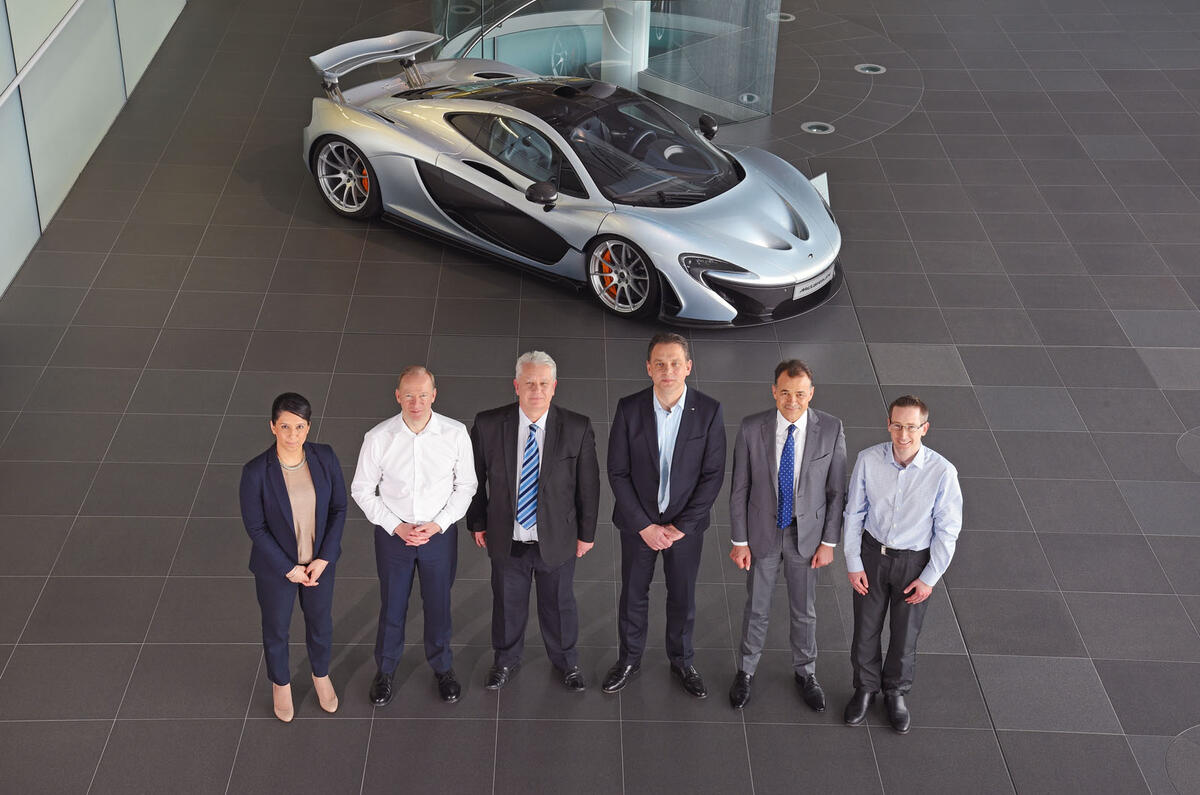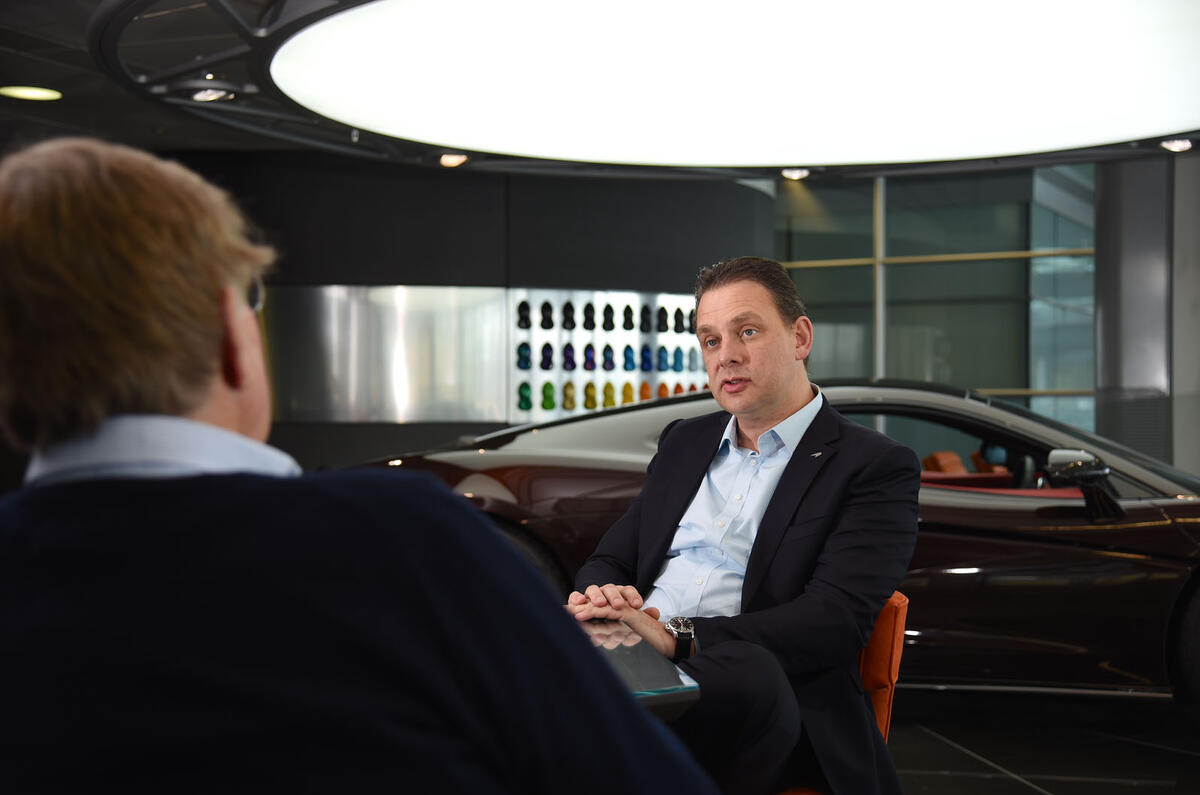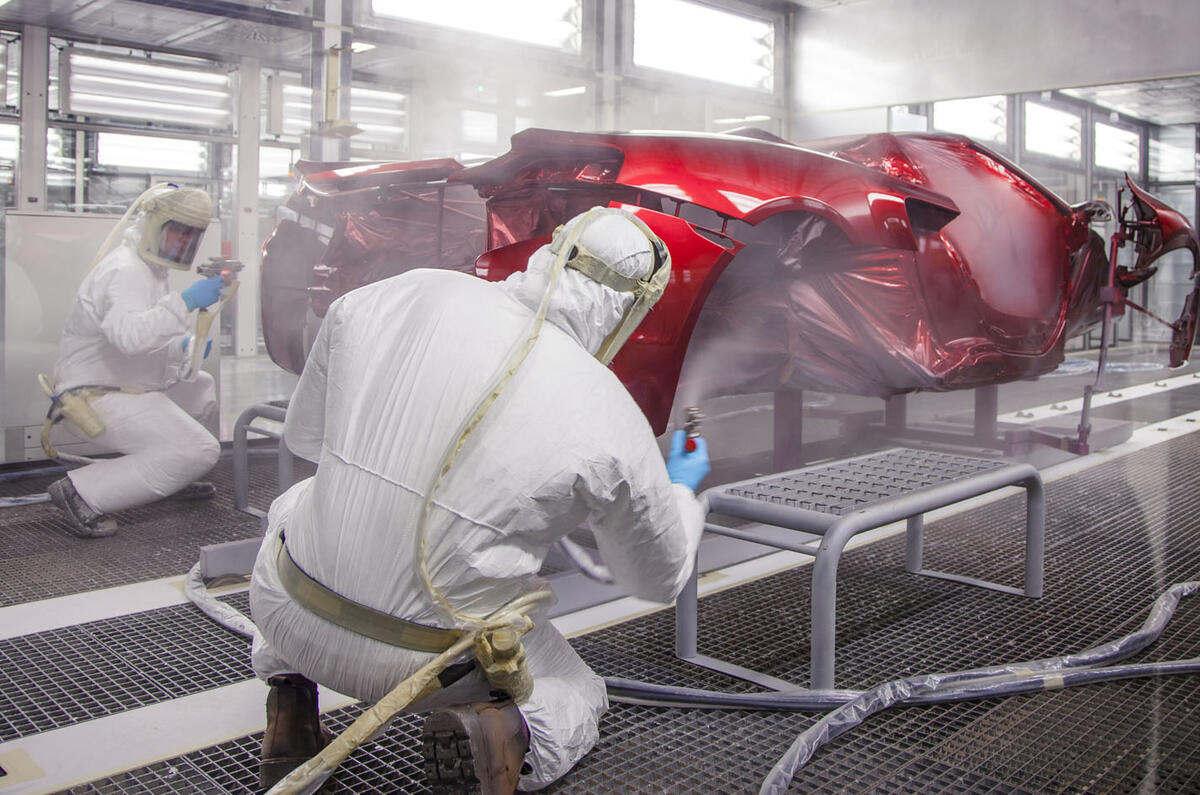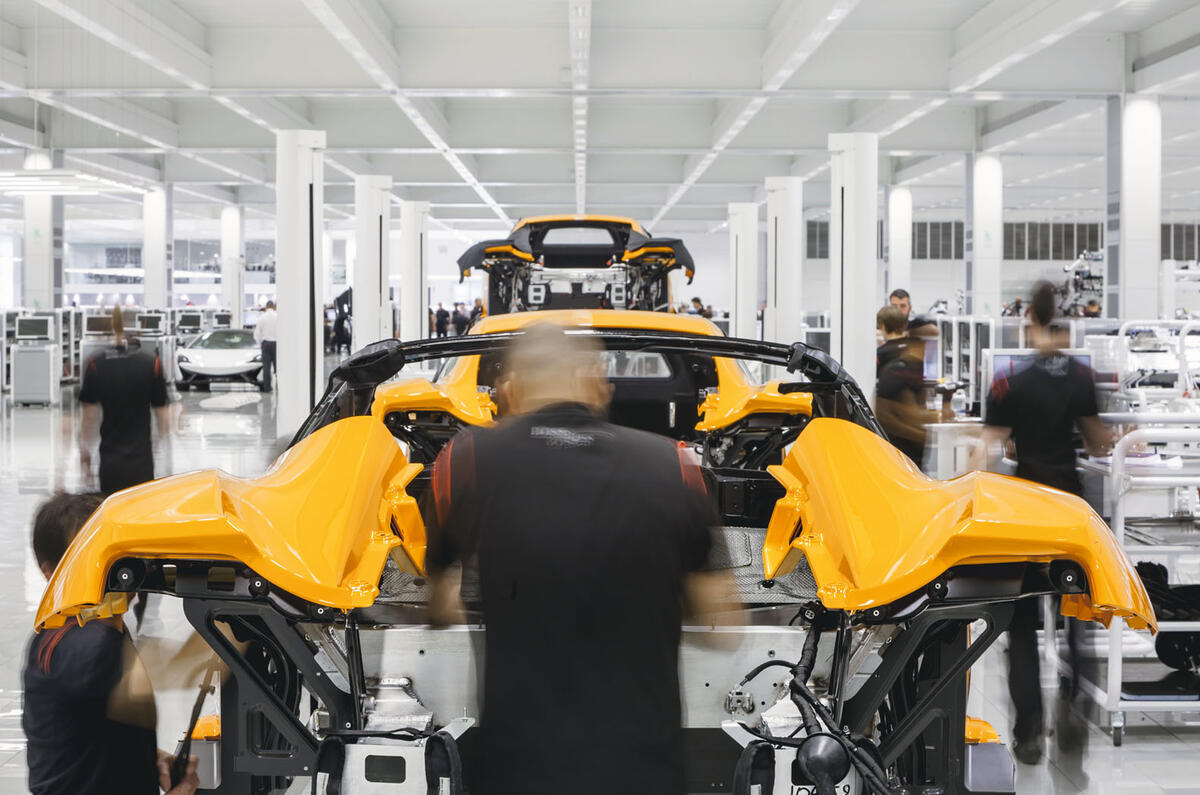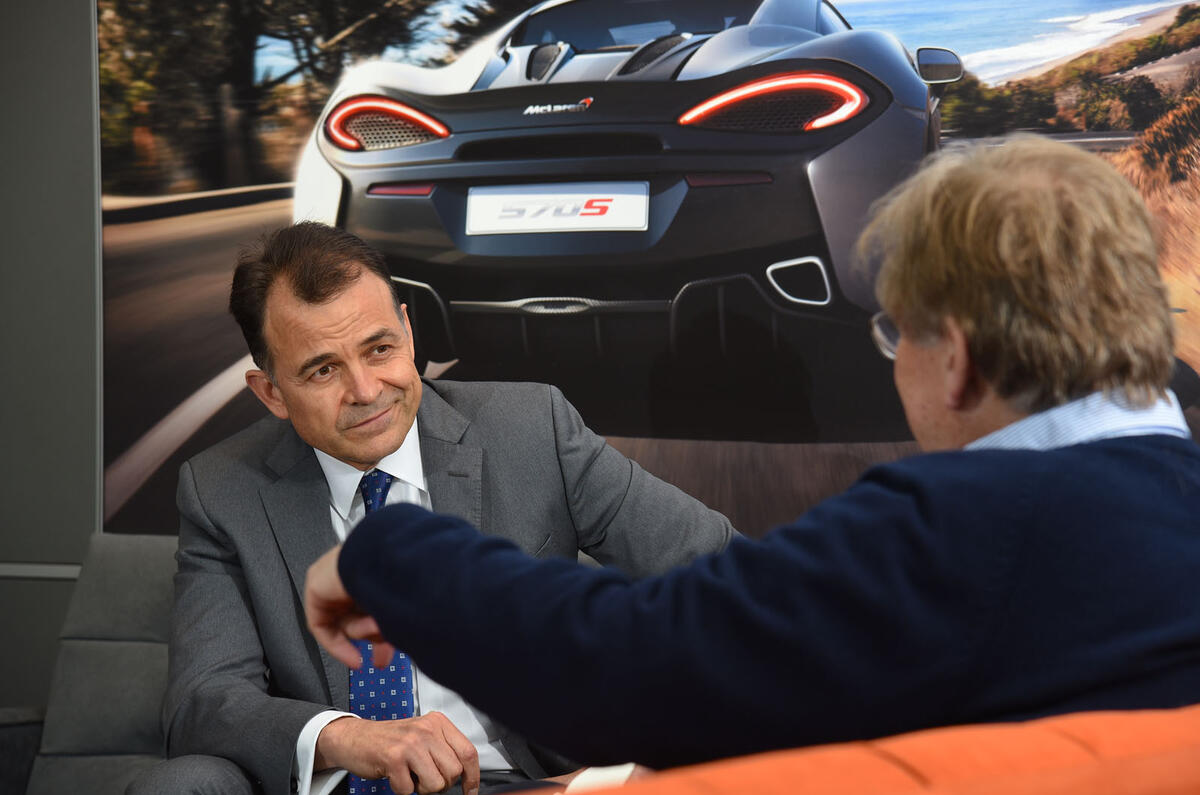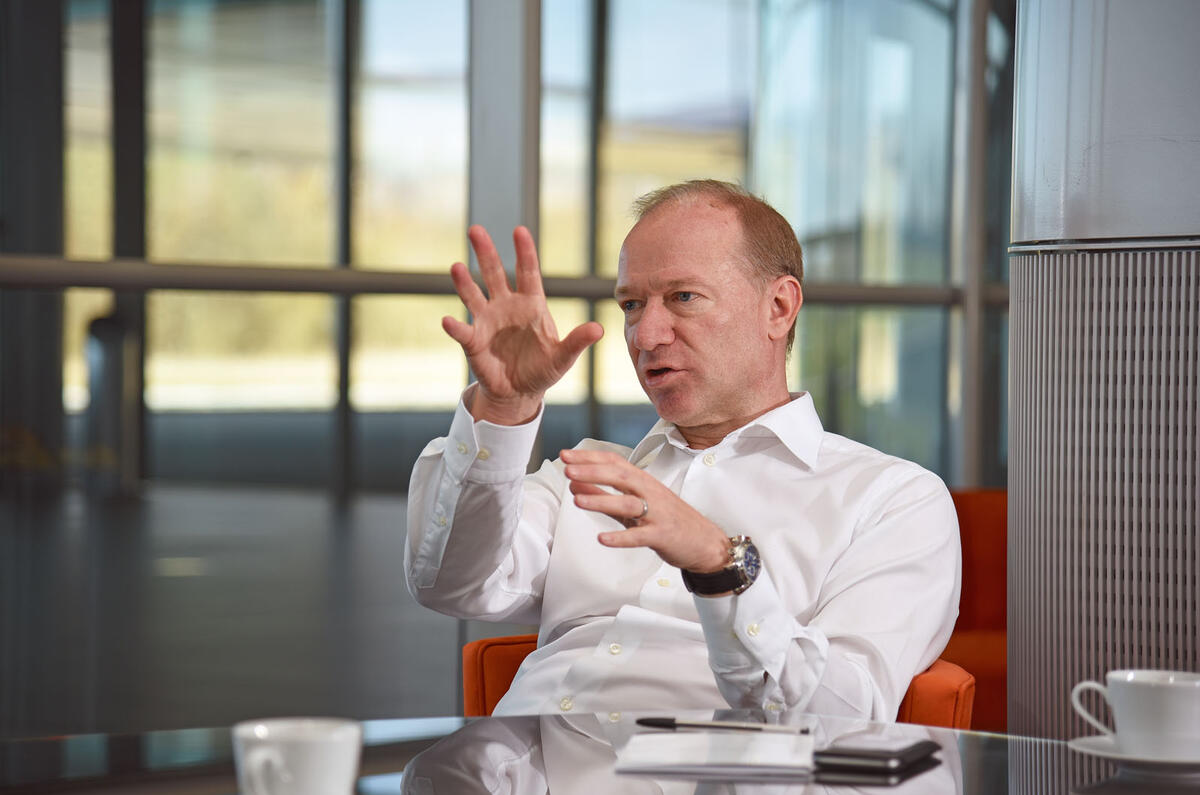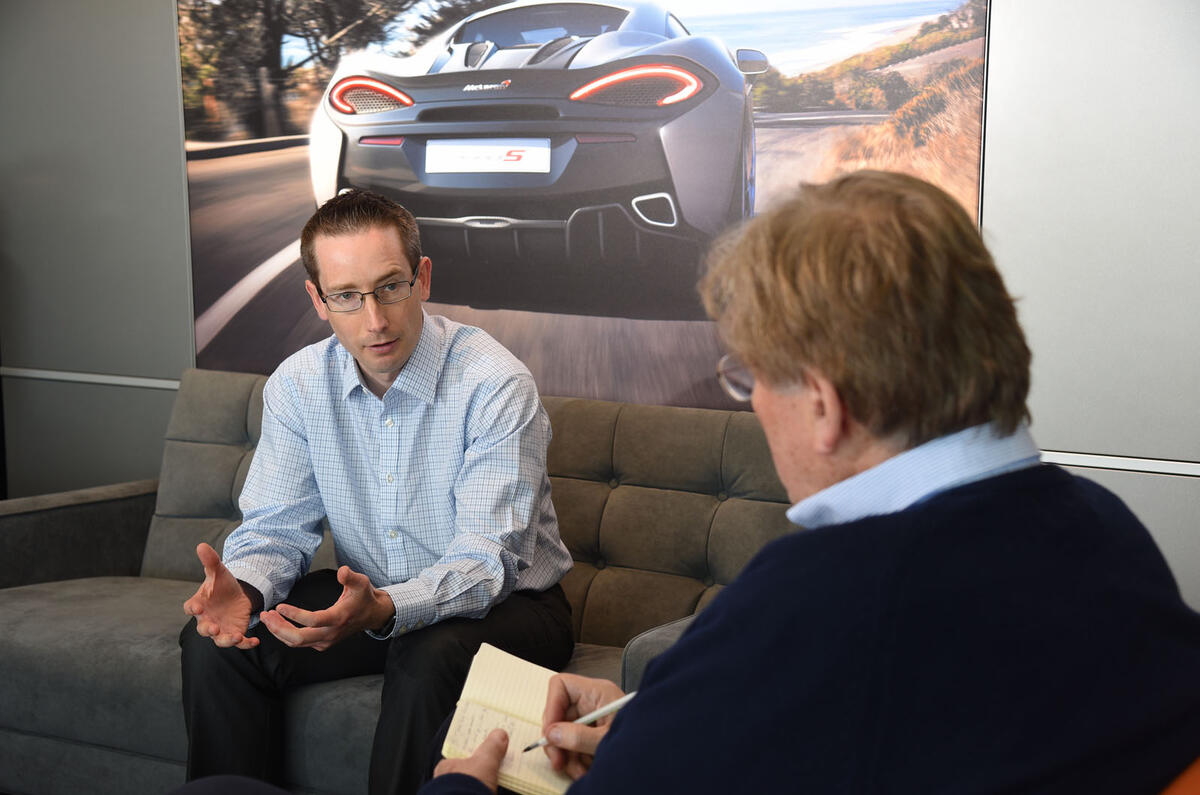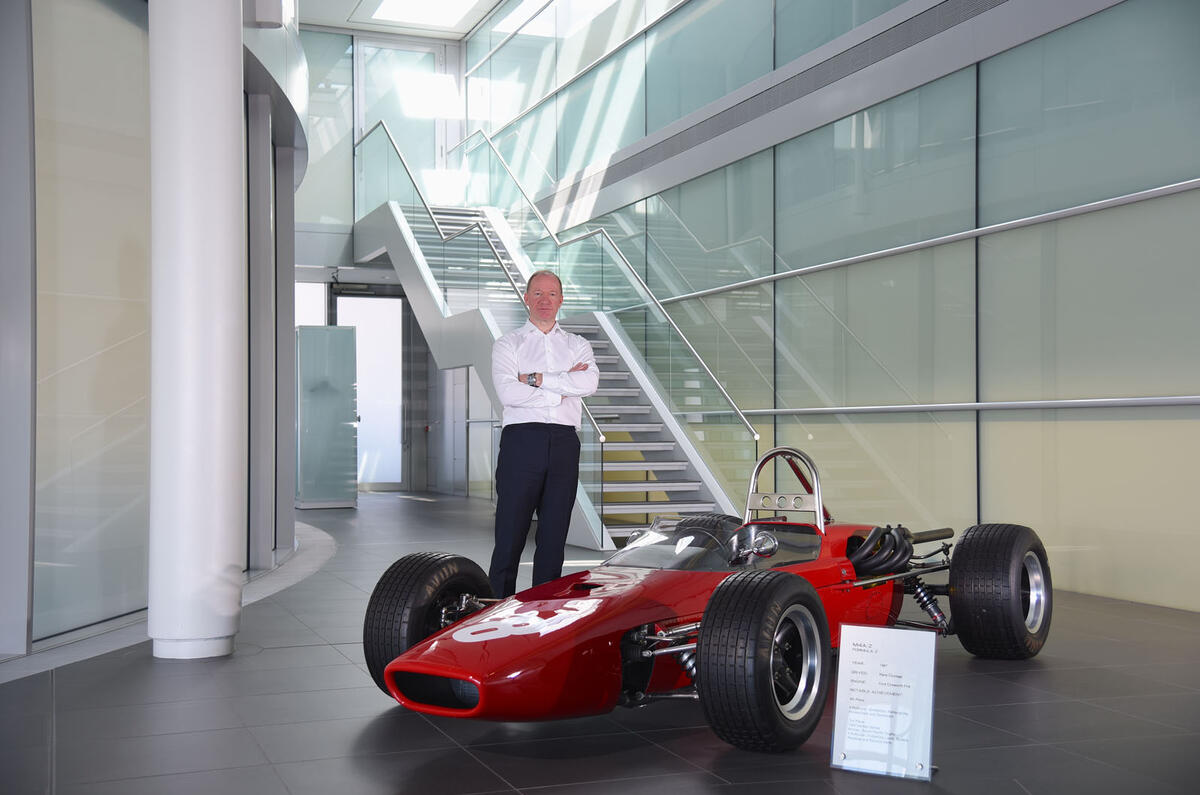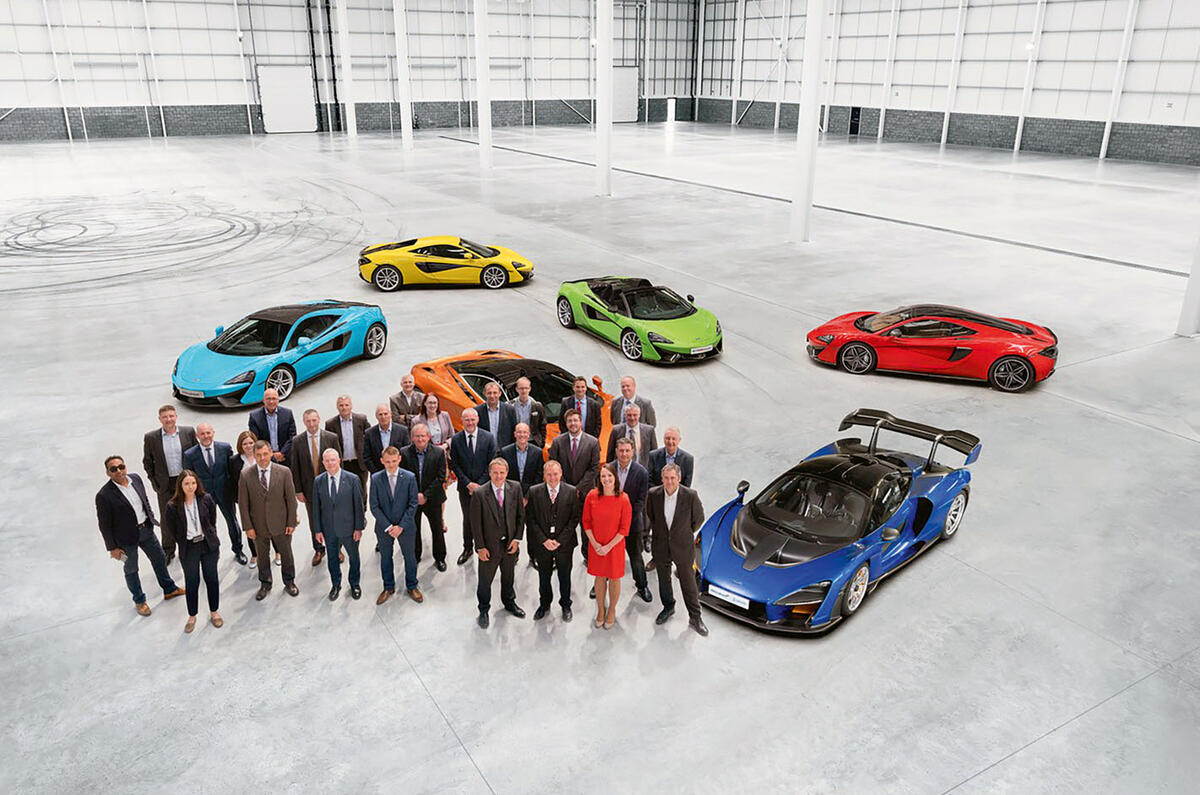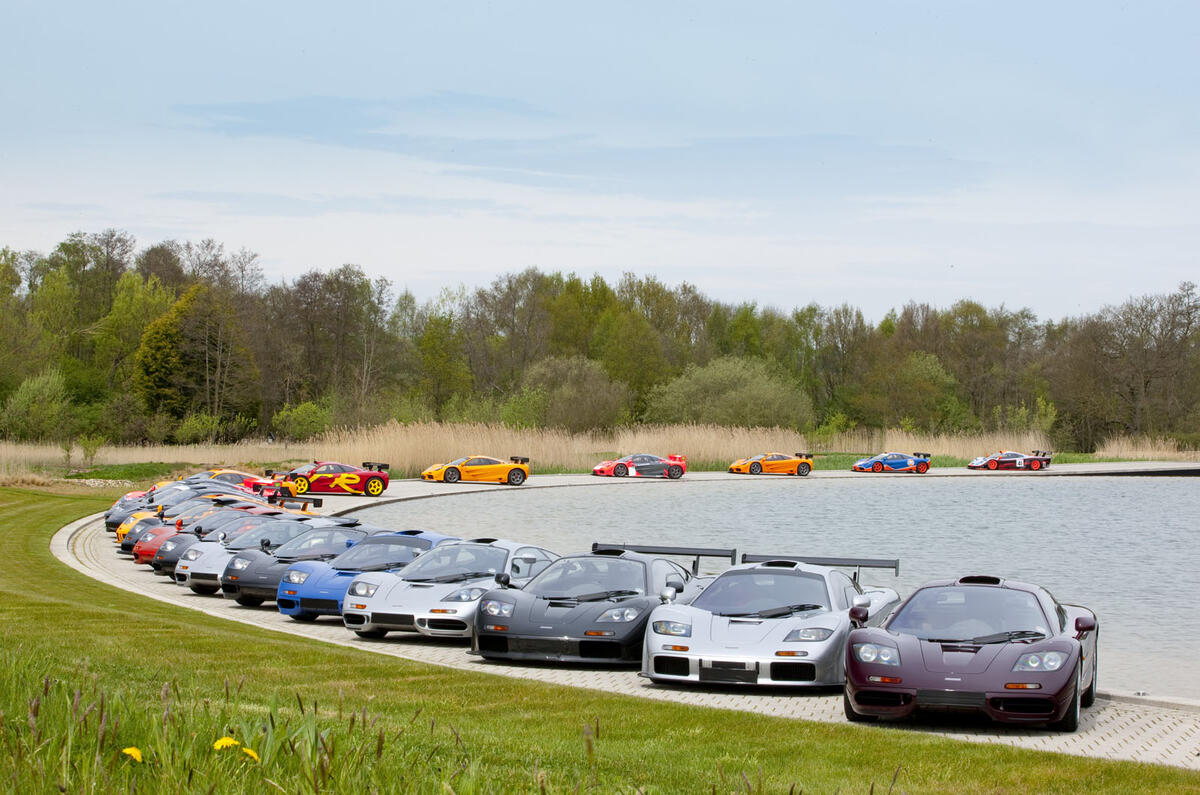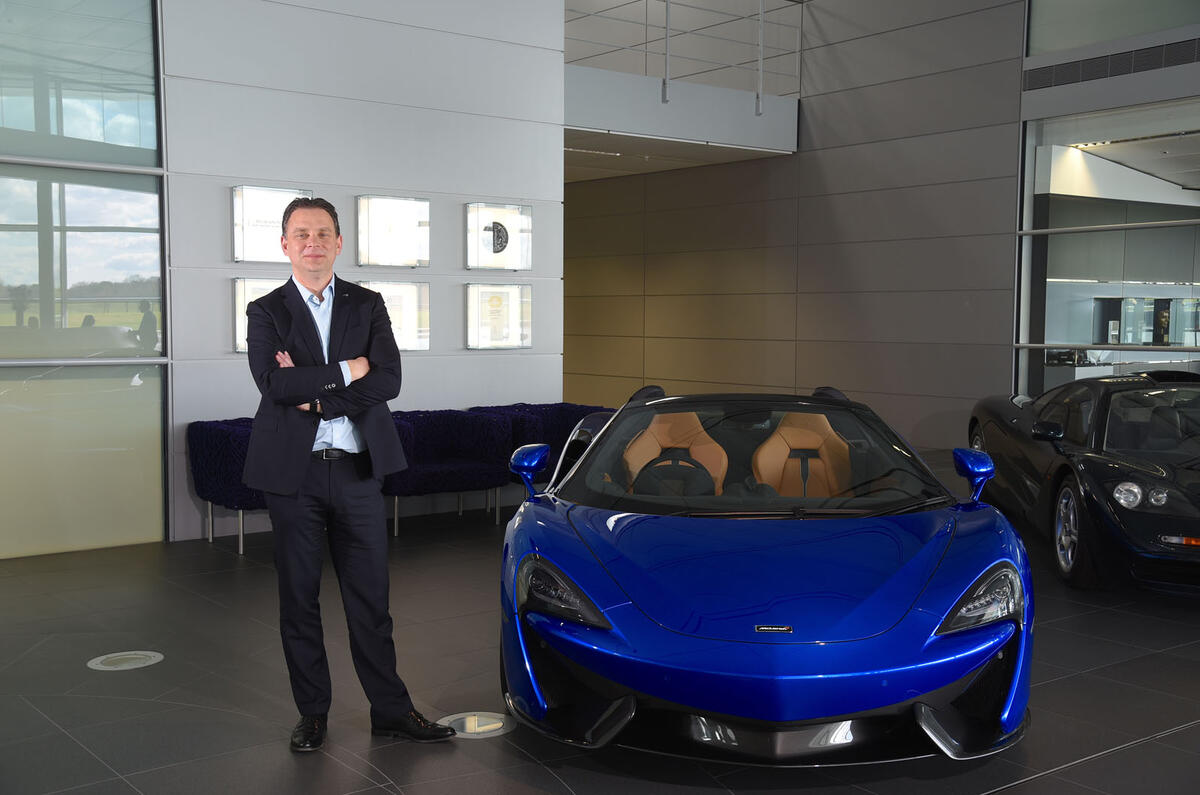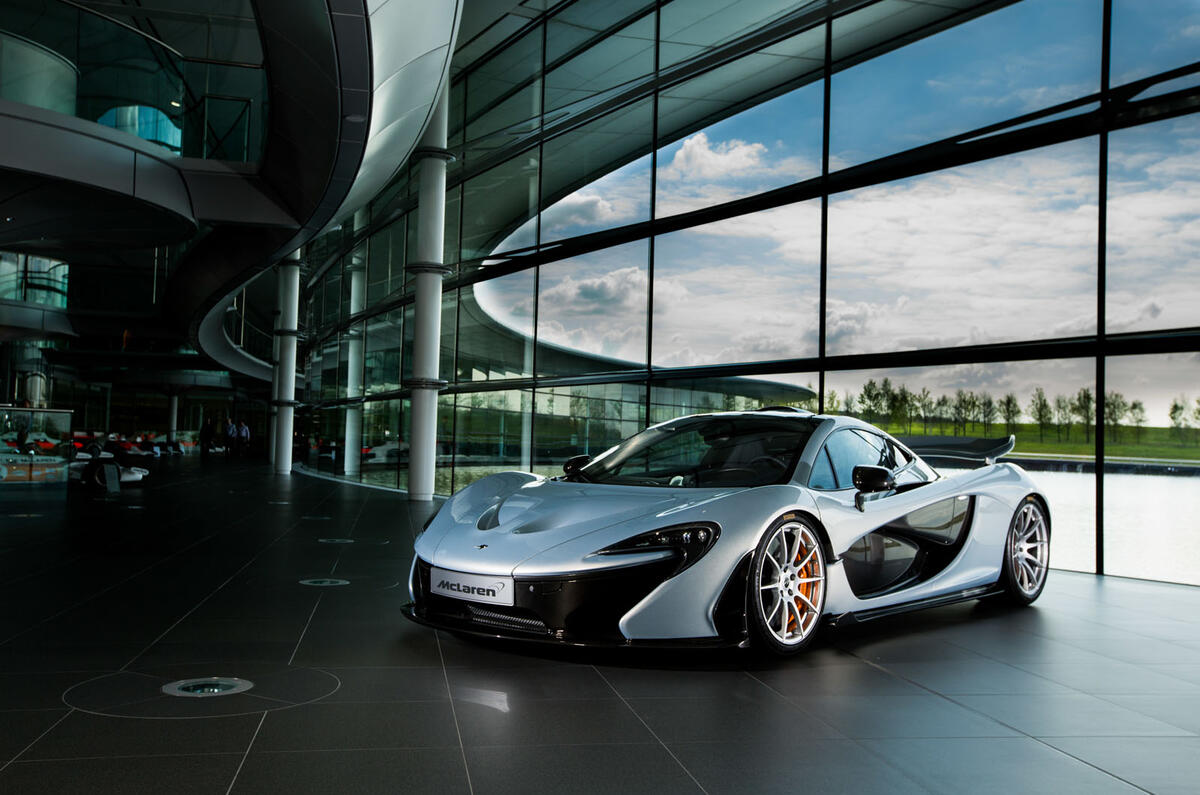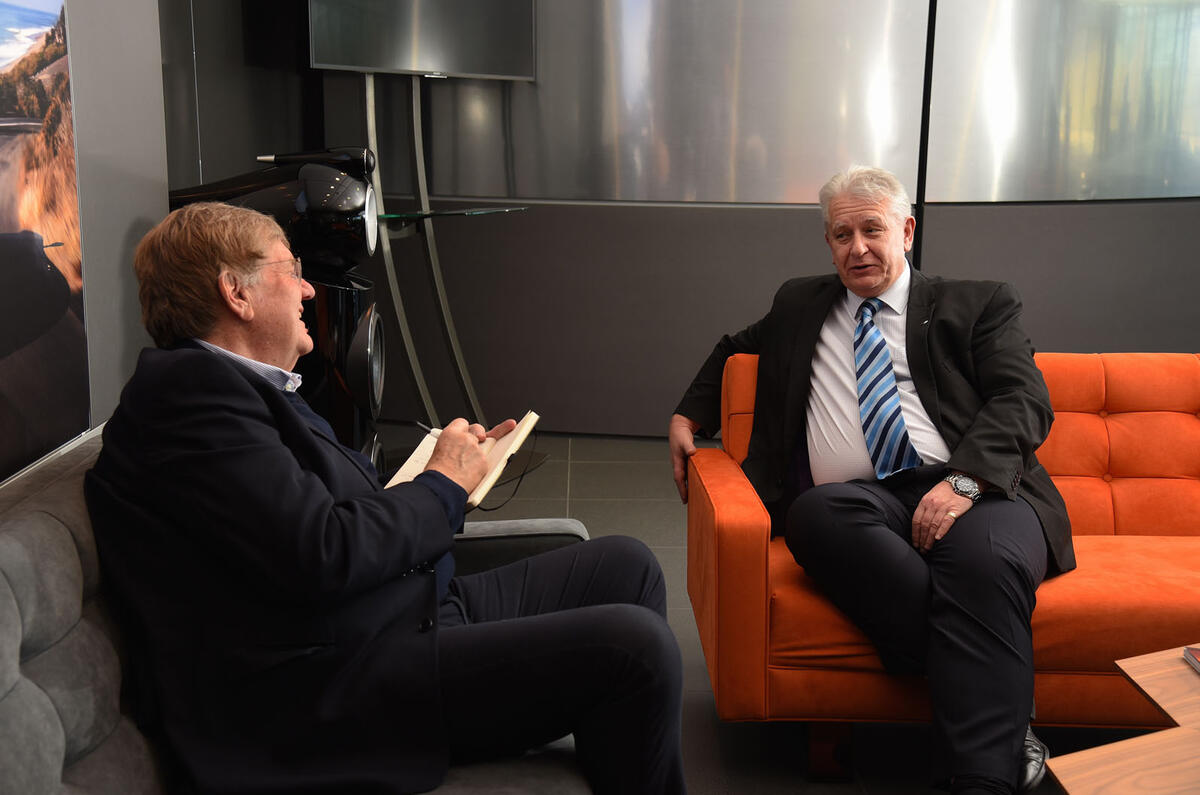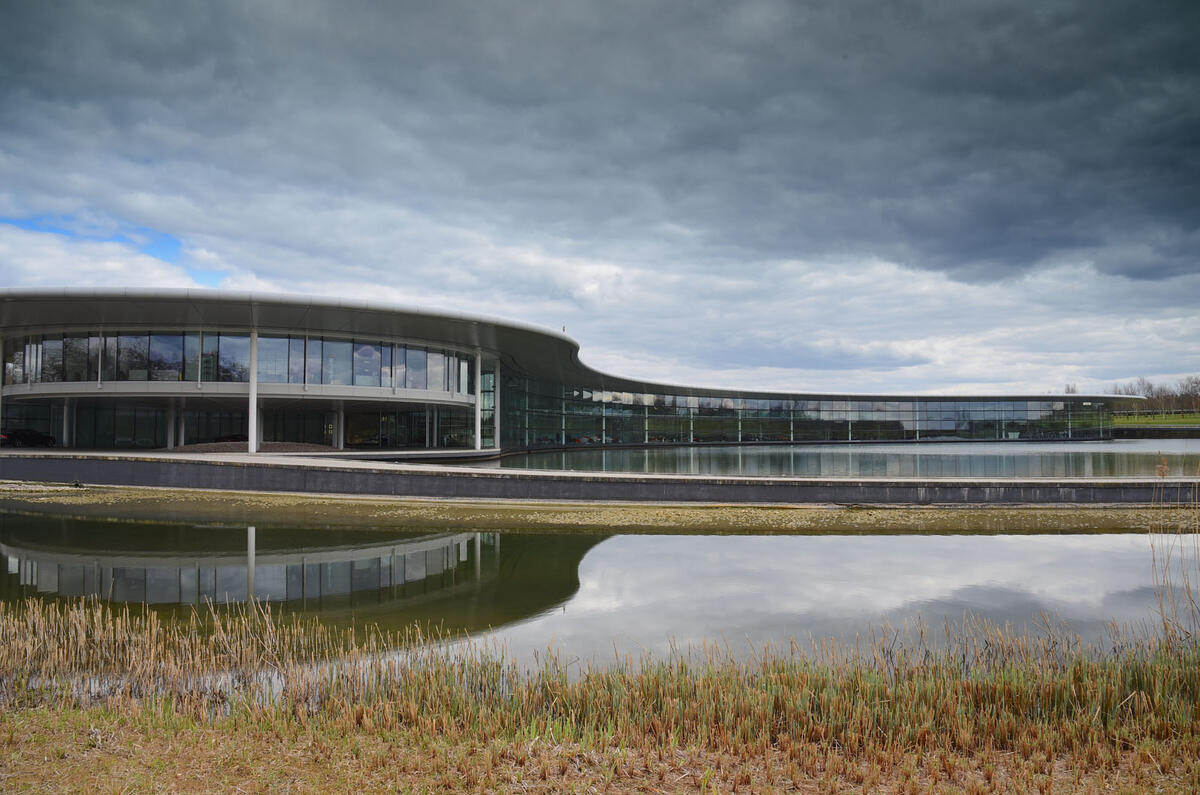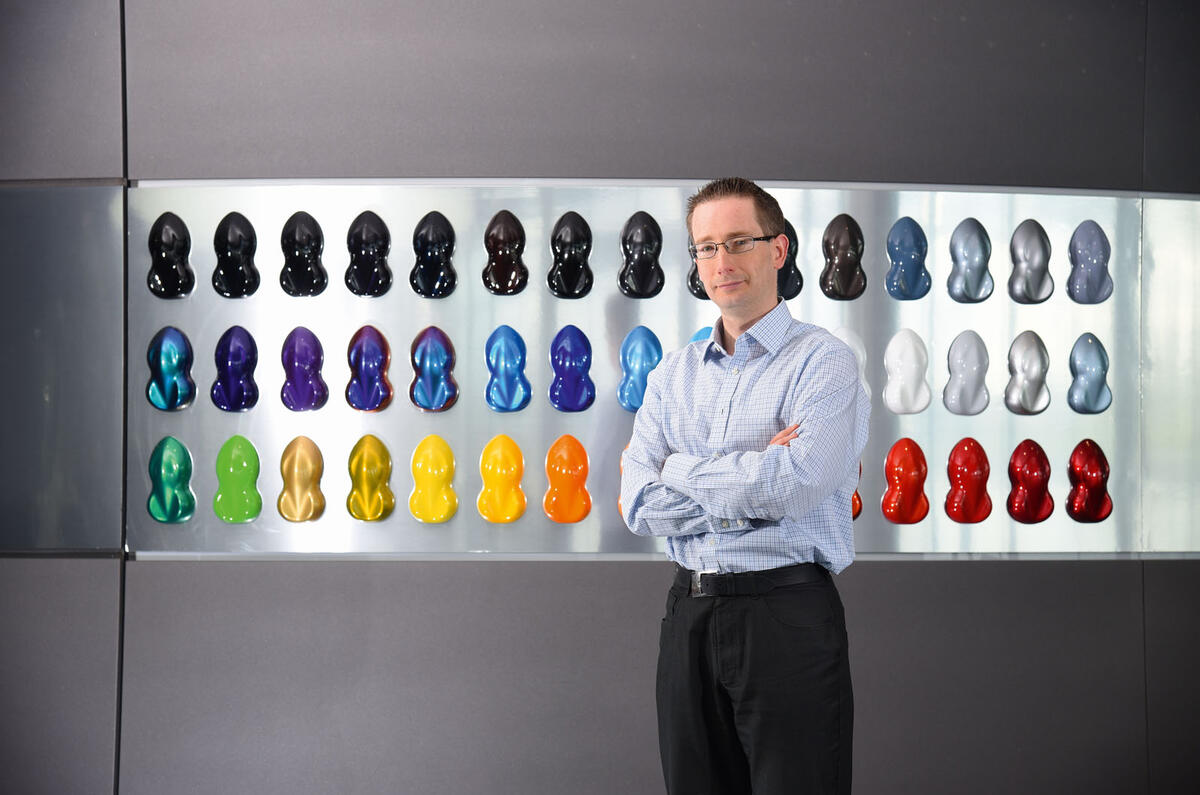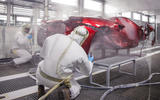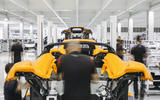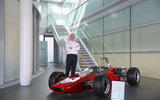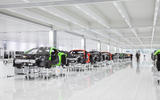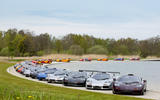The remarkable thing about McLaren Automotive – if you set aside the amazingly short time it has taken to establish itself as a bona fide Ferrari rival – is how perfectly it fits the philosophy of its founder, the New Zealand-born constructor and racing driver Bruce McLaren.
McLaren died in 1970, a few weeks before he could complete his first road car, and McLaren Automotive didn’t start selling until 2011. Yet there’s an almost mystical alignment between the unabashed ambition and instinctive love of engineering of the Auckland-born racer killed at 33 while testing one of his own Can-Am sports cars and the similar ethos of the Woking-based company that, in only its eighth year, has already put 15,000 McLaren cars on the road. Those who knew Bruce say he’d have approved their every move.
McLaren Automotive’s rise is accelerating, what with 2018 production tipped to approach 4000 cars, the fifth year of profitability.

Yet road car manufacture under the famous name has definitely had its share of fits and starts. Had he lived, McLaren would undoubtedly have built some M6GT coupeÃs in the early 1970s, crossing the road car/race car divide. But those never made it. Two decades later, with Ron Dennis at the helm, a successor company called McLaren Cars built the legendary run of 106 Gordon Murray-designed F1 hypercars. More were planned, but McLaren’s marketing people of the time simply ran out of billionaires.
McLaren Cars became dormant but the wider group kept its road car manufacturing hand in (and kept its Formula 1 engine supplier of the time, Mercedes, tolerably happy) by building the car officially known as the Mercedes-McLaren SLR at Woking between 2003 and 2008 – until Dennis’s unquenchable ambition to make road cars of his own eventually kiboshed both deals.
By the end of the decade, the plan for today’s mid-engined, Woking-built turbo V8 two-seat McLarens had surfaced, and in 2011 the very first MP4-12C models reached customers. Early cars were beset by electronic and infotainment gremlins – rapidly chased away by an incoming manufacturing guru soon to become CEO, Mike Flewitt – but the essential car was plenty good enough to bear early comparison with the Ferrari 458 Italia, the road testers’ darling of the time. In the ensuing six years, following the announcement of a three-tier model structure (Sports, Super and Ultimate Series), McLaren has already launched nine models and derivatives and promises another 12 by 2022, more than half of which will be hybrid. At least one – the Ultimate Series successor to the mighty P1 supercar – will be pure electric.

Yet a fascinating series of unknowns surrounds McLaren’s achievements; billion-pound questions, if you like. How do you start a company in one of the most failure-prone areas of industrial manufacture and make it stick? How has the company made such progress so quickly? How do you get launch customers to trust you, then find follow-on customers to sustain you through the years. What about the talent, the money, the ideas, the facilities: where does all that come from? The simple answer to seems to be that you think very deeply and plan very well. We spent a deep-dive day at Woking, talking specifics with key members of McLaren’s multi- talented executive group...
Assembling the building blocks:
Alan Foster, McLaren’s hugely experienced executive director of infrastructure projects (and former manufacturing chief), joined McLaren back in 2005 instead of going to Russia to establish yet another mass-market plant, the kind he had been setting up or running most of his working life.
He remembers the day they first started talking about moving the company from a two-a-day SLR operation to the 20-a-day production scale needed for a profitable all-McLaren future: “‘Okay, clever clogs,’ they said, ‘how do we make as many cars as we need?’ I made it pretty clear straight away that our paint shop would never cope with the new volume and that we needed much more manufacturing floor area.

“Then we had to make key decisions about what kind of manufacturing system to go for. In volume manufacture you often sacrifice technology to chase numbers, but for a new McLaren, technology had to be king.
We have a clear technology bias towards F1, and a bunch of engineers who want it that way. So our build process had to be as flexible as we could make it, to give customers the latest and best. And it work. Do you know, in nearly eight years of production, I doubt if we’ve made the same car twice.”
Foster was convinced McLaren would function best with a large number of key suppliers delivering components and sub-systems just in time. The priorities, he reckoned, were to maintain the F1 carbon fibre heritage, and to keep 100% control of design, 100% control of assembly. The idea of Ricardo, a supplier, building the engines was fine. “Engine manufacturing isn’t that difficult,” says Foster. “The hardest bit is designing them.”
Early on, Foster and his top management disagreed over the floor area the new manufacturing centre would need. Foster said 36,000 square metres, and allowed himself to be argued down to 32,000. But some in the company reckoned the right figure was 20,000, whereupon Foster dug his heels in and won. “They told me if the MPC [McLaren Production Centre] turned out to be too big, I’d be fired,” Foster grins, “but I’m still here.” This year, McLaren will make close to 4000 cars, against a maximum capacity of 5500 to 6000 units.

McLaren uses skilled human technicians to paint its cars, rather than robots, and will stick with that plan for the foreseeable future, though robot bracketry has been installed. “You only save on robots if you produce big, big numbers,” Foster explains. “And besides, really skilled painters can do things a bit better than robots. They’ll spot the bottom of a door and paint it with extra care.”
Engineering vs cost:
It’s 11am on a Monday morning – and nine hours since McLaren engineering chief Andy Palmer left home in Belgium in his “office” McLaren 570S. There’s hardly a more thorough way for a car creator to test what he makes than to use it for a week-beginning across-Europe dash. He likes it, he says, and does look remarkably fresh when we settle down to talk. Instead of the usual road tester’s banter, we dive straight into the economics of cars, the cost control stuff that allows fabulous cars to be built at a price the wealthy (as opposed to the fabulously wealthy) can afford. Controlling build costs is a vital key to maintaining decent volumes from year to year, so McLaren aims to save everywhere.
“Look at a Ford Focus wiring loom and compare it with one of ours,” he says. “They’re not that different, and neither is the manufacturing process. One shouldn’t cost five times the other. These days we do our own studies of the effect of economies of scale on parts prices, and our own negotiations with suppliers. It definitely pays off.

“Look at the retractable roofs of the 650S and 570 Spider models. They’re not the same but quite a few bits are common. Our job is to make sure we get full benefit of that. Maybe over a Spider model’s life cycle our supplier will send us 5000 roof sets. If we use something similar in another Spider model, it’s another 5000. That needs to be ref lected in the price.”
Another big factor for engineering bosses, says Palmer, is the cadence of models. When you’ve got McLaren’s well-publicised Track 22 plan to deliver (which means 12 new models and derivatives over the next four years), there’s no time to lose. McLaren gives its engineers a basic 30 months to produce a new model – presuming it’ll use a carbon tub and powertrain related to existing models. It’ll cost a bit more for models containing as much new stuff as the McLaren 720S but less for LT (Longtail) versions of familiar cars. The spectacular new McLaren Senna, already sold out, began only two years ago.
Palmer sees savings in the car-building process too. Fitting windscreens by robot (common in mass model factories) would cost £3 million by the time the required equipment is installed, a huge investment for four-a-day production and hardly consistent with McLaren’s “effectiveness first” philosophy. So at Woking, screens go in by hand.

Why it’s more than a numbers game:
Jolyon Nash, McLaren’s global head of sales and marketing, whose former life at Rolls-Royce shows in the fact that he’s probably the most immaculately dressed man in Woking, arrives to outline the fast-expanding supercar company’s plan for continuing commercial success.
McLaren’s biggest expansion has happened on Nash’s watch – he arrived in 2014 – but the picture he paints is not so much a thirst for relentless expansion as a desire for sustainability, even in times of uncertainty at home. He speaks fondly of McLaren’s “relentless drive into the future”, meaning a burning desire for the highest technology and business success in an arena where many good players have been defeated, rather than the shallow pursuit of numbers. McLaren Automotive, he says, “doesn’t need or want to get much bigger”.
Nash sees a couple of vital goals: a need to build far greater global brand awareness (McLaren has still to expand into many promising markets), plus a greater recognition – even by existing customers – of the company’s open and informal nature (replacing the cold austerity of former times). Such things build long-term stability.

“If you love cars and are serious about driving, you should own a McLaren,” he says with quiet but awesome conviction. Some car sales and marketing bosses get accused of being more about window dressing than substance, but not this one. You get the point? The details make the difference.
Finding the people:
By 2020, when McLaren’s new Sheffield carbon chassis factory is on stream, the company will employ 1600 people. At present, tubs are sourced from a European supplier, but the Sheffield move will bring 200 jobs back to the UK.
“Finding the right people for a company like McLaren is a very exacting process,” says Mandeep Dhatt, McLaren’s executive director of human resources who took charge of the process nearly five years ago. “It starts with a series of meetings with managers around the company to decide the skills, talents and even attitudes we need. McLaren Automotive has a very specific culture.
“It’s not uncommon to be looking for people with extremely rare specialisms; there might be only 10 experts of a particular kind we need in the world. Finding the right person takes research and care so we use a variety of helpers – specialists and headhunters, but also colleagues and peers. We’re flexible, but we’re most interested in people who can match the passion of the colleagues we already have. In difficult cases, that process can take three or even six months.” The passion for the business is “almost ferocious”, says Dhatt, who sees one of her most important duties as being to induct people who will maintain that drive.

When McLaren needed people for a second shift at its Woking Manufacturing Centre, HR staff began making recruiting arrangements fully 12 months before the start date, taking around 40 days to identify, assess, interview and judge the “cultural fitness” of applicants and then holding mass assessment days to check that people had the required dexterity and understood the rigours of the job. After the final choice, staggered dates were set over three months so new employees could be shown their jobs, trained, checked and finally inducted. McLaren is passionate about quality: no new employee begins unsupervised work unless they have repeatedly proven they can achieve the standard, and preferably displayed the passion of the rest.
McLaren’s rapid rise:
2010: New Automotive division is spun off McLaren Racing and reveals its first model, the MP4-12C.
2011: The 12C, as it became known, is generally well received but is plagued by niggly problems, like the self-developed Iris infotainment, and also concerns that the car isn’t exciting enough to drive.
2013: The P1, a high-performance hybrid successor to the F1, is launched, famously at the same time as rival hypercars from Porsche (918 Spyder) and Ferrari (LaFerrari). Incredible to drive, it also sells out, showing McLaren’s ability to credibly compete as a maker of £1m-plus cars.
2014: 12C is relaunched as the 650S, emphatically righting the 12C’s wrongs.
2015: New entry-level model, the 570S, is launched. So good, it almost makes the more expensive 650S feel suddenly superfluous.
2017: 720S is launched, instantly setting a new benchmark for supercars. McLaren also announces plans for a new carbonfibre production facility in Sheffield, and reveals record sales of 3340 cars, double 2015’s volumes.
Talking (and making) money:
Paul Buddin, McLaren’s chief financial officer, is a funny kind of accountant.
He drives a 570GT, has been to every McLaren outpost around the world, regularly goes to driving events and motor shows and even signs off the company’s new models. He’s a walking reminder that McLaren can only embark on projects that make money – and that’s a matter of getting price, numbers, build costs, development costs, standing costs and potential after-sales earnings correct and locked in. Get that stuff wrong and, however worthy, a car’s not worth making.
Buddin has been on the staff since McLaren started building its first cars in mid-2010, and still believes its rate of growth “feels like a normal company in dog years”. He presides over a department of 70 money- movers nowadays; when he started, it was 20. Early on, there was a point when the company owed £70m and had a turnover of just £6m to service that. “If I’d properly thought about the risk, I’d have found it quite stressful,” says Buddin, “but I was always confident about our prospects. Some people see my job as simply keeping score, but my view is that I’m part of the team so whatever happens is my responsibility as much as theirs.”
Mind you, Buddin is clear that his frequent trips into far-flung car-building parts of the company are for reasons other than merely dispensing goodwill. “I need to be able to speak with confidence in meetings,” Buddin says. “When someone says it’s going to cost X to develop this car, and overstates the figure, I need to be able to say: ‘Well, no it’s not.’”

Though McLaren claims four years of profitability with a fifth strongly in prospect, Buddin talks of a U-shaped graph that shows its total expenditure, given the heavy upfront costs of a company like this, which are only gradually being returned. “We’re established on the upward side of the curve,” he says.
“It feels good to have passed the minimum point, but we’ve got to maintain steady progress. Getting to 5000 cars a year would make a big difference. But if we don’t maintain our progress, nothing is a given.”
Talking to Buddin alerts you anew to the many factors that affect progress away from car development and manufacturing. “We have warning lights we watch all the time,” he says. “In any year, conditions are going to be different. We’re not just talking sales volumes. It’s about things like our ability to build, and our costs to deliver. Are these healthy? Exchange rates are vital too. We export 92% of our cars and 70% are sold in dollars or euros. There are times when your bottom line has surprisingly little to do with your ability to build or sell. These things have to managed too; for people like me, that’s where the challenge lies.”
Bringing it all together:
McLaren CEO Mike Flewitt, who arrived as chief operating officer in 2012 and graduated to the biggest job a year later, wins universal credit for sweeping away early glitches in car quality while rapidly building an operation capable of making 4000 cars a year – eight times the manufacturing rate in 2011.
Getting cars built in the desired numbers at the right quality is his strength, Flewitt says, ironically citing the scale change he made when leaving Ford for McLaren. “On the Friday I left Ford,” he says, “we made 8700 cars. On the Monday I joined McLaren, we made six...”
With rare humility, Flewitt reckons he “probably wouldn’t have had the spirit of enterprise” to get the McLaren operation off the ground. “What I am is a capable manager,” he explains. “I’ve done my best to bring in the same professional attitude to production you’d find at Ford, Volvo or Rolls-Royce, where I was before.”

“The biggest thing already here when I arrived was our amazing brand,” he says. “Our phenomenal reputation from racing was easy to communicate. Our only road car, the F1, had been a defining model. And we already had a strong shareholder base that has only become stronger. But building the structure we need has been a really hard journey and what we need is a mixture of people’s experience – mine, Alan Foster’s – as well as the fresh ideas of the people we have who are just out of university.”
In June, Flewitt points out, the company will have been selling cars for seven years. There’s a stability about McLaren it hasn’t known until now: “We have a business with 300 suppliers, working two shifts, making 4000 cars, selling through 90 dealers in 31 countries, that should hit a £1 billion turnover this year.
“That’s different from last year, when we made 3340 cars, over 50% more than the previous year, and really struggled to deliver the required volume, what with our suppliers and our factory having to scale up so fast. We could have sold more cars, actually, but held back just a bit. But we pulled it off.”
Flewitt does plenty of thinking about McLaren’s future, another of his key functions. “Ideas come from a whole host of us,” he says, “and we all share the same ambition to develop the company. We’ve seen too many developing car companies fail through poor decision-making to get overconfident. So anything that gets proposed has to survive three tests. Is it consistent with our philosophy? Will it make money (we have no room for things that don’t)? And do we have the technology and capability to make it the best in the world? If all those get a yes, we’ll get serious.”
Read more
McLaren 720S review

